[THE DEBRIEF] I FLASHED THE ECU ON MY 2025 BMW S 1000 RR AND THE GAINS ARE SHOCKING
From falling on its face to a midrange beast with just a few keystrokes
I recently purchased a 2025 BMW S 1000 RR after riding and evaluating a wide range of open-class European and Japanese sport bikes. Following an exhaustive, street-focused break-in period, I took my new motorcycle to New Jersey Motorsports Park, where I rode all day with a client on the 12-turn, 2.25-mile Thunderbolt Raceway.
As I noted in a previous post, the stock exhaust/noise-emissions-mandated tune is awful. The BMW engine produces good peak numbers—190 horsepower at 13,000 rpm and 85 pound-feet of torque at 8,500 rpm—but the Grand Canyon-sized midrange torque dip beginning at 5,500 rpm makes the bike difficult to ride smoothly on the racetrack.
How so? At NJMP, I had to use first gear in several corners where I would have much preferred second. Also, the transition to “real” power was very abrupt, and anticipating when the engine would come to life was, at times, stressful. I even went so far as to tell my client, who was riding a slick-tired Ducati V4 S, to leave a gap behind me exiting key corners.
After just one day on the S 1000 RR, I knew I had to “flash” the ECU. I went to my friend Shiv Pathak, the owner of OpenFlash Performance, with three goals: 1) remove the emissions restrictions; 2) broaden the torque curve; and 3) retain the stock rev-limiter. OpenFlash charges $595 for a BMW ECU flash. Turnaround time is 24 hours, and back-up service is included.
So, what’s an ECU tune on a 2025 BMW S 1000 RR worth on track? Let’s find out by first looking at a couple of dyno graphs:
Second gear before and after the OFP flash:
Blue = Stock
Red = Tuned
And, just for fun, here is fifth gear:
Blue = Stock
Red = Tuned
Both graphs clearly highlight the emissions-imposed restrictions, especially in the lower gears. Full disclosure: These dynamometer graphs were supplied by OpenFlash and generated using a different 2025 S 1000 RR, which was also fitted with a stock exhaust system. OK, but how did the bike perform on the racetrack?
I had a one-on-one coaching day booked at NJMP with a great client and was looking forward to testing the BMW with its new tune. Following a long travel evening returning from Mid-Ohio after the MotoAmerica races, loading up in the dark, capped by a crazy early-morning start, I arrived at NJMP to an overcast sky, mist, and a wet track.
Aside from a few damp patches, the track was almost dry in time for the first session. My first impression? Wow! No more restrictions. Most of the improvements are in the middle portion of the powerband. Response is sharp without being abrupt, and acceleration never seems to end. Top end doesn’t feel different, but the engine revs freer beyond 12,000 rpm.
Drivability is excellent. Apply 2% throttle, and you get 2%. If you want 60%, you get 60%. The bike is quicker, but I have more brain space available to actually use and enjoy the power than I did with the stock setup. This is where Shiv’s development shines. He specializes in only a few models—examples of which he actually owns—meaning R&D runs deep.
As the day went on, the track dried completely, but the mist remained. I was able to get two solo sessions, and my best lap time was quicker, despite the subpar conditions. Final question: With the OpenFlash treatment, is the S 1000 RR faster? In a word, yes. The top speed on day one was 156.3 mph, while the top speed on day two was 159.9 mph, a gain of 3.6 mph.
Here is a full lap at NJMP using AIM GPS speed data that shows the difference in top speed, as well as acceleration:
Black = Stock
Red = Tuned
Next up: grip, gearing, and suspension optimization.
About Ken Hill
Ken Hill is considered the top motorcycle riding coach in the U.S. He bought his first motorcycle at age 30 and began road racing the very same year. Despite the late start, Ken went on to set track records and win class championships before making his professional debut in the AMA Superbike class, where he finished in the top 10 at age 41. Ken’s passion for learning and, ultimately, bettering the sport, led him to retire from racing in 2007 and devote himself full-time to coaching. Learn more at khcoaching.com.


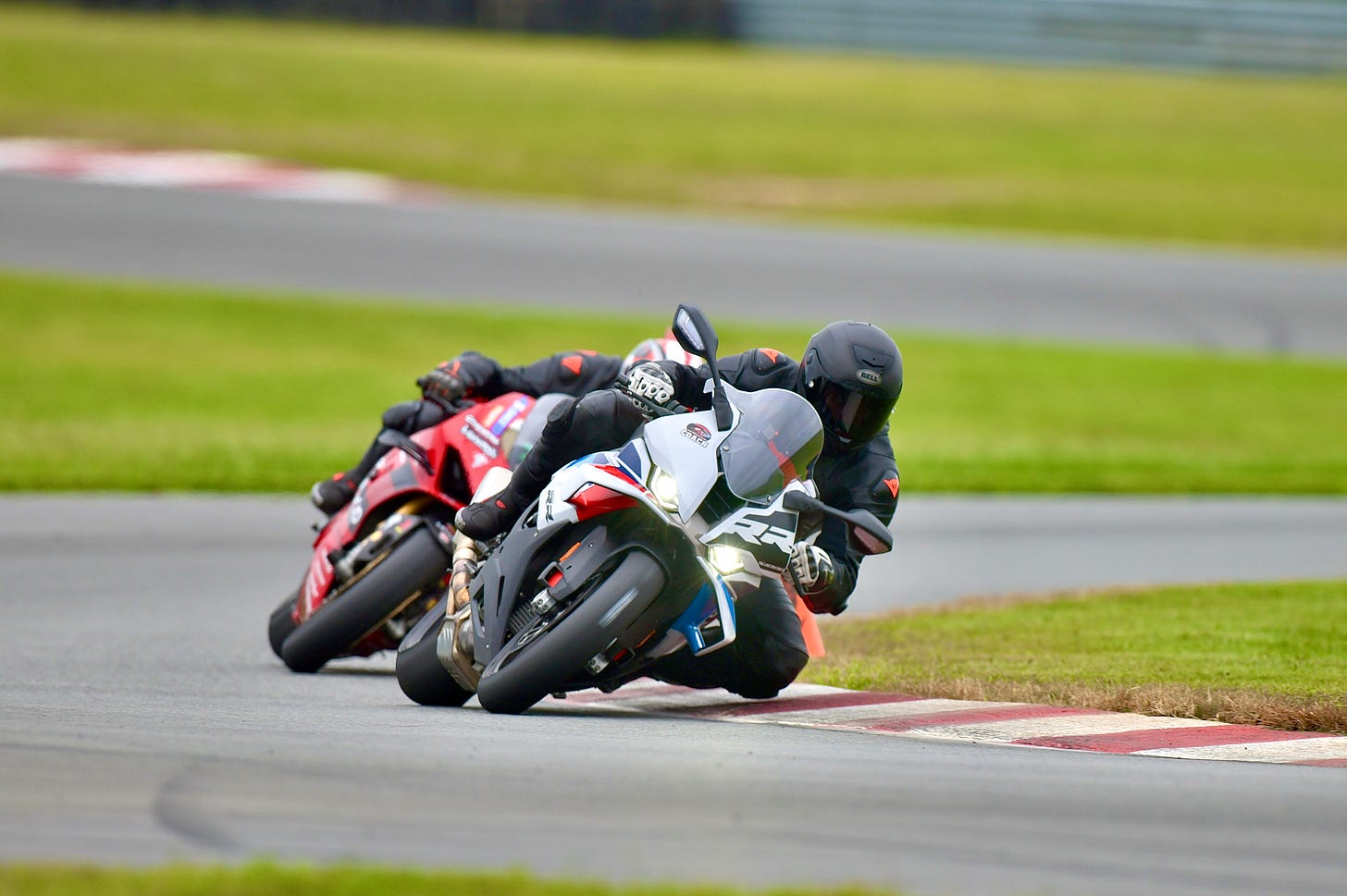
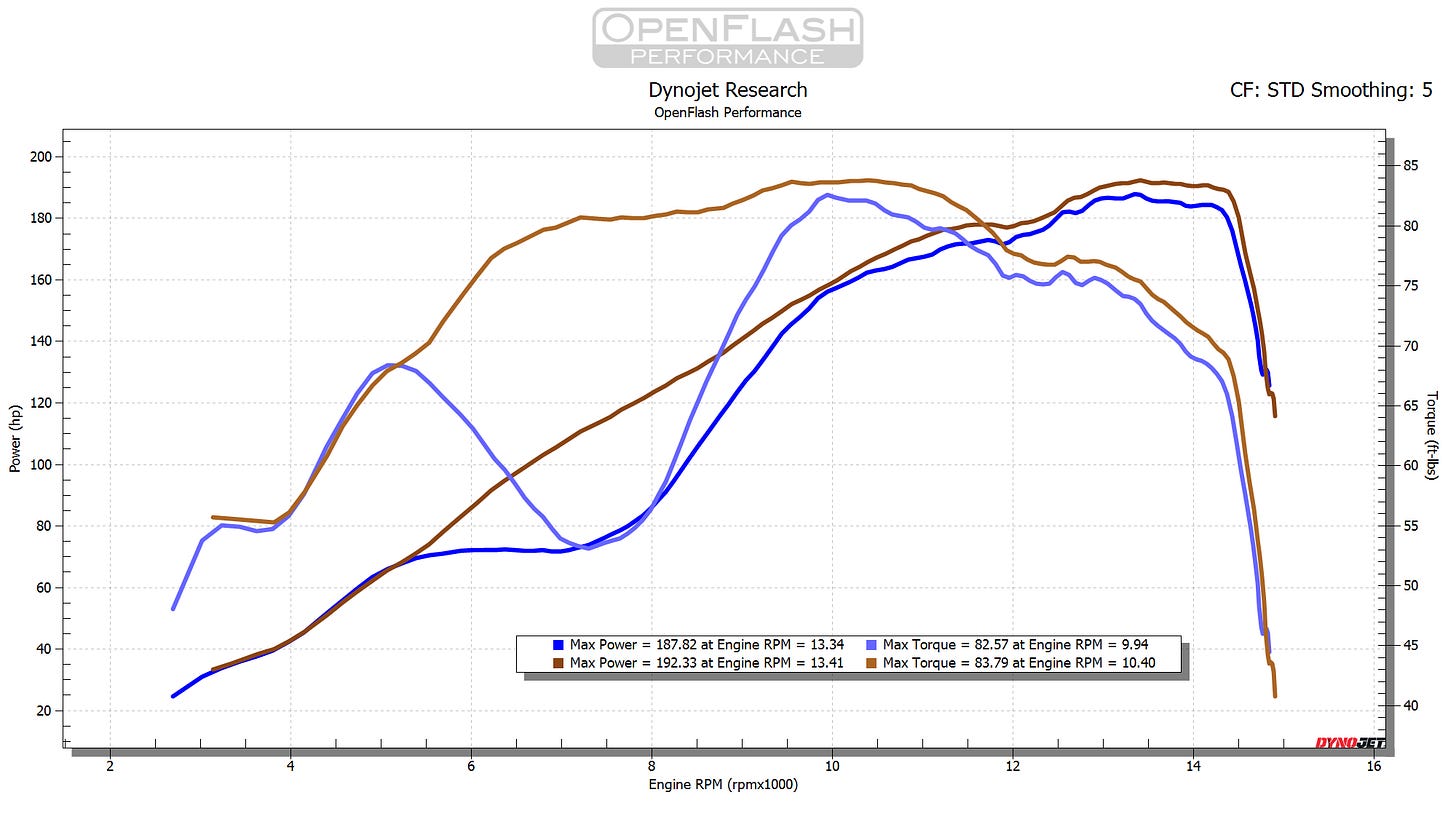
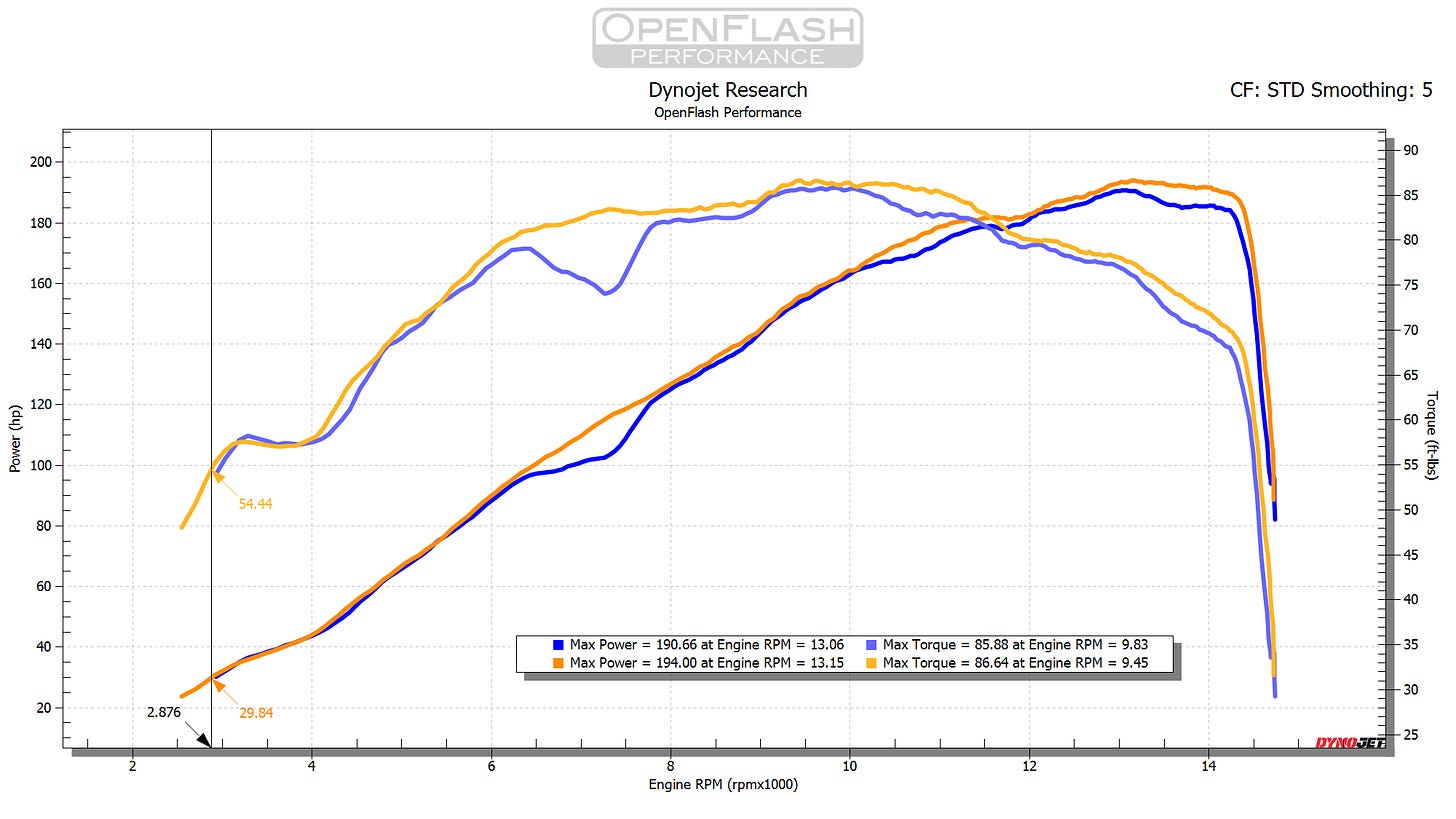
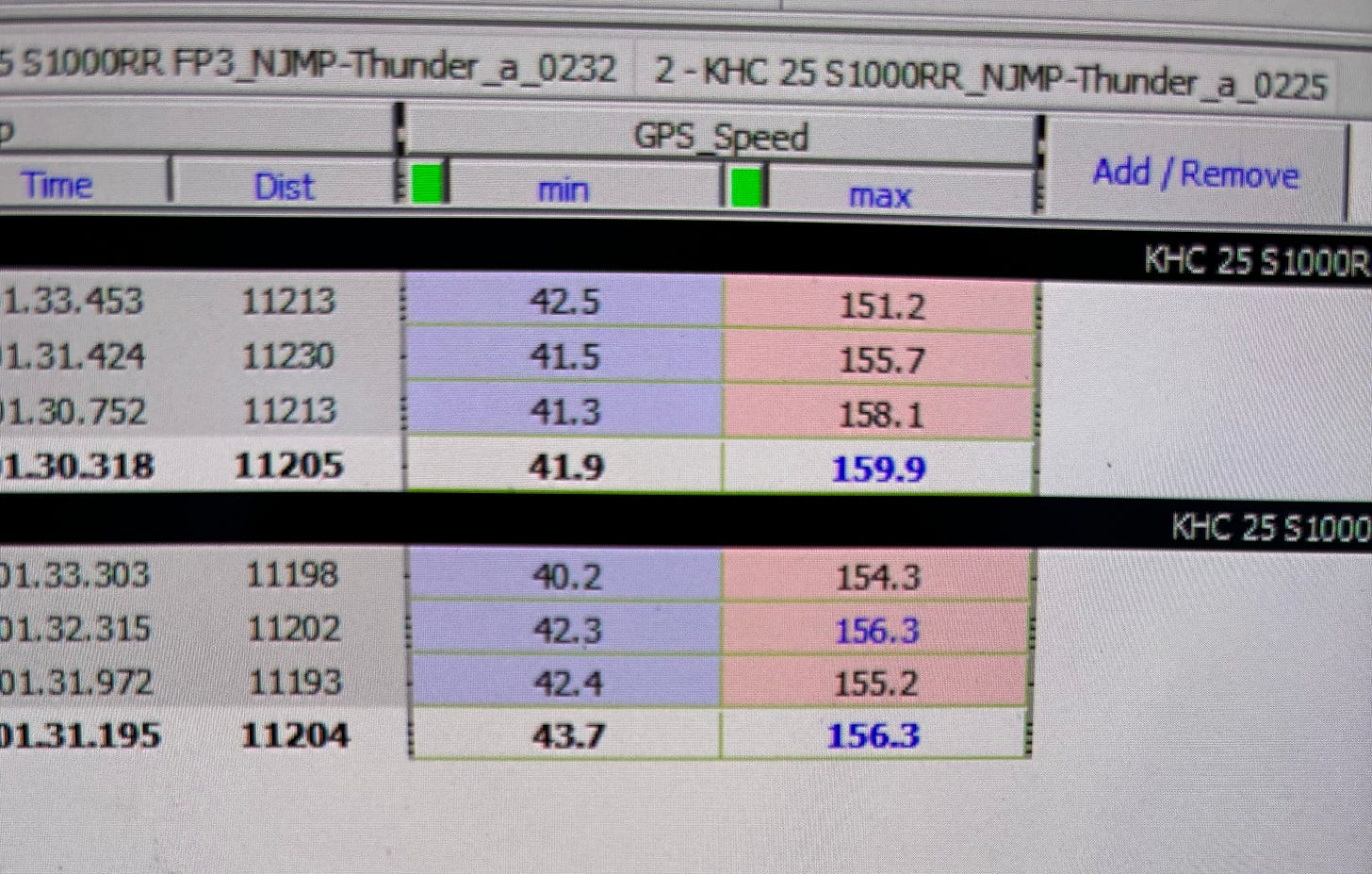
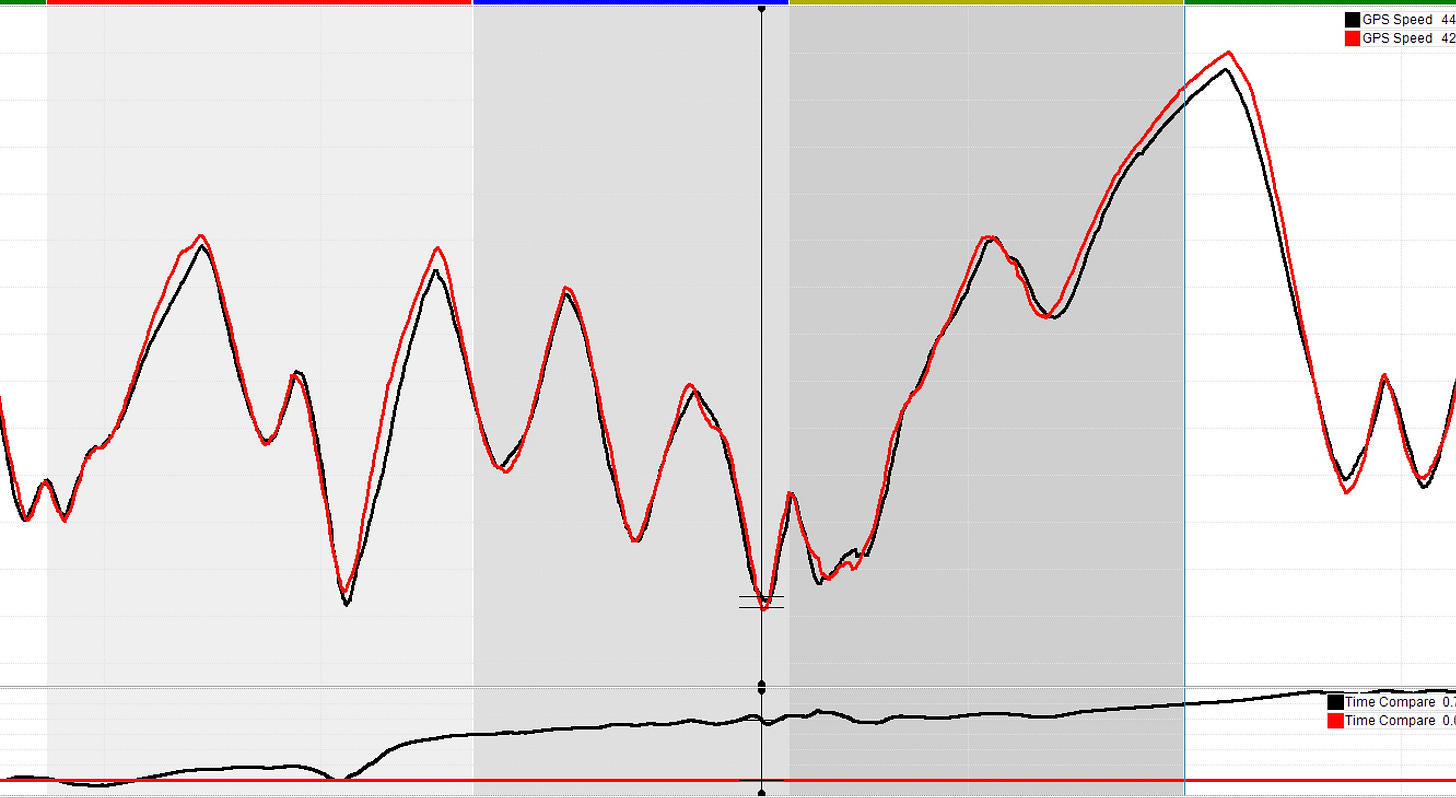
That dip is absurd. I can’t believe they would release it like that.
Vishal - Thanks for signing up!
I have ridden multiple bikes with the BT tunes and I’ve had mixed results. Some have been good, nothing outstanding positive or negative. Others have been very aggressive with initial and part throttle.
I’m really picky with initial, part and roll off characteristics and am super happy with Open Flash.